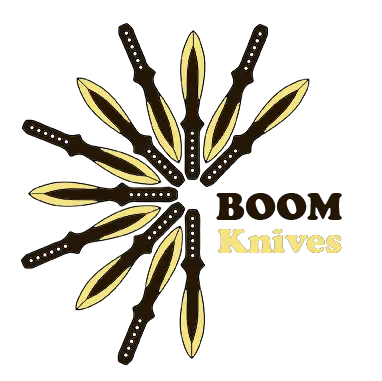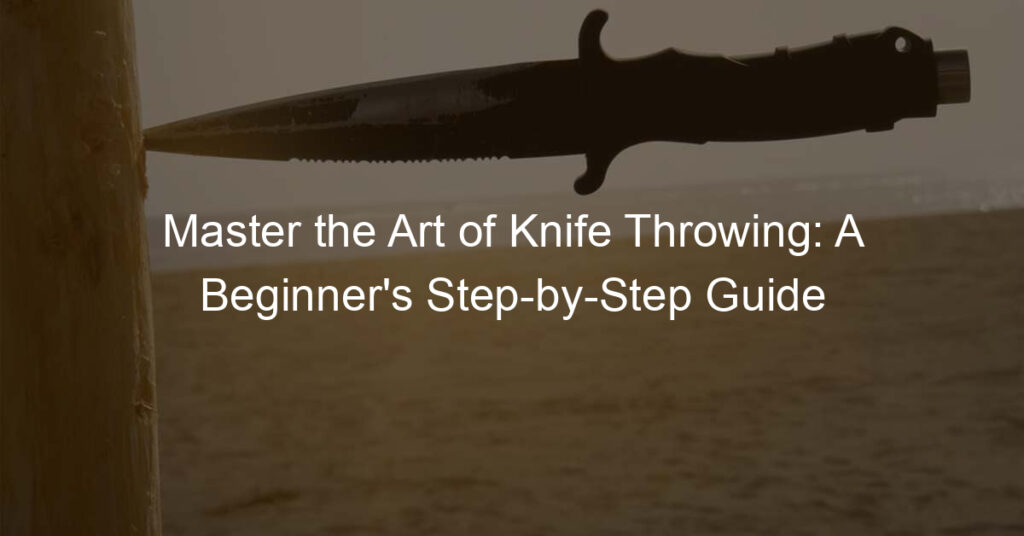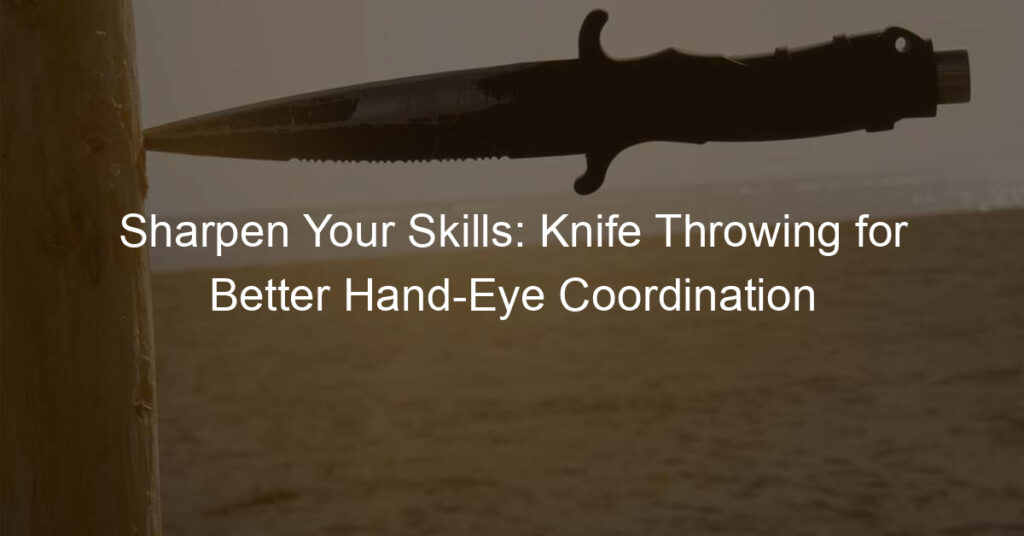Introduction to Knife Throwing
Skill that has been around for centuries, is more than just a thrilling hobby. It’s a practice that requires focus, precision, and a deep understanding of the tools at hand.
-
- Knife throwing
Is a sport where the participant throws a knife at a target, aiming to hit as close to the center as possible. It requires a keen eye, a steady hand, and a lot of practice. The knives used are typically specially designed for throwing and are balanced differently than regular knives.
-
- The history and evolution of knife throwing
Over time, it evolved into a sport and form of entertainment, with knife throwing competitions now held worldwide. The knives used have also evolved, with modern throwing knives being designed for balance and precision.
-
- Why learn knife throwing?
It can help improve your hand-eye coordination, focus, and patience. It’s a unique skill that not many people have. Whether you’re interested in it for sport, self-defense, or just for fun, knife throwing can be a great addition to your skill set.
Knife Throwing Basics
Understanding the Equipment
- Types of throwing knives: The three main types are the blade-heavy, handle-heavy, and balanced knives. Blade-heavy knives have more weight towards the blade, making them spin slower and easier to control. Handle-heavy knives have more weight towards the handle, which makes them spin faster. Balanced knives have an equal weight distribution, making them perfect for both short and long-distance throws.
- Choosing the right knife for beginners: If you’re a beginner, a balanced knife is the best choice. They are easier to handle and throw, making them perfect for learning the basics. The knife should also be made of a single piece of steel for durability, and it should be dull to prevent injuries.
- Safety equipment for knife throwing: Safety should always be your top priority when throwing knives. Safety equipment includes a first aid kit, protective eyewear, and sturdy gloves. It’s also crucial to wear closed-toe shoes to protect your feet.
Setting Up Your Practice Area
-
- Choosing a Safe Location
You need to choose a safe location for your practice. This should be an open space, free from obstructions and away from people or pets. An ideal location would be a backyard or a secluded area in a park. Safety should always be your top priority.
-
- Setting Up a Target
This can be a wooden board or a foam target. The target should be at least 1 meter in diameter and placed at a height that is comfortable for you. Make sure the target is securely fastened to avoid any accidents.
-
- Establishing a Throwing Line
This is the line from which you will throw your knives. The distance between the throwing line and the target depends on your skill level. For beginners, a distance of 3-4 meters is recommended. As you improve, you can increase the distance.
Setting up your practice area is a crucial step in your knife throwing journey. It not only ensures your safety but also helps you practice efficiently.
Beginner’s Guide to Knife Throwing Techniques
One of the most crucial aspects of knife throwing is the grip. There are three primary grips used in knife throwing: the hammer grip, the pinch grip, and the hybrid grip. Each grip has its unique characteristics and advantages.
The Grip
- Hammer GripOne of the most common grips used in knife throwing. It’s named so because you hold the knife in the same way you would hold a hammer. Your fingers wrap around the handle, and your thumb rests on the top. This grip is known for providing a strong hold and is excellent for beginners.
- Pinch GripIt involves pinching the knife between your thumb and index finger. The rest of your fingers are used to stabilize the knife. This grip allows for more control and precision, but it may take some time to master.
- Hybrid GripIt is a combination of the hammer and pinch grips. You hold the knife like you would in a hammer grip, but your index finger and thumb pinch the handle’s top. This grip offers a balance between strength and control.
The Stance
-
- Standing Position
Stand upright with your feet shoulder-width apart. This position provides a stable base and allows you to maintain balance throughout the throw. Keep your body relaxed. Tension in your muscles can affect your throw, making it less accurate.
-
- Foot Placement
If you’re right-handed, your left foot should be slightly forward. If you’re left-handed, your right foot should be in front. This foot placement helps you maintain balance and gives you a solid base to push off from when you throw the knife. Your feet should remain on the ground throughout the throw to ensure stability.
-
- Body Alignment
Your body should be facing the target, with your shoulders and hips aligned with it. This alignment helps you aim accurately. When you’re ready to throw, your arm should move in a straight line towards the target. This ensures the knife travels in the direction you want it to.
The Throw
- Step-by-step knife throwing
-
- Hold the knife by the handle with your preferred grip.
- Stand in your chosen stance, with your body aligned towards the target.
- Extend your arm straight out, aiming the knife at the target.
- With a swift and smooth motion, throw the knife towards the target.
- Practice this motion until you can consistently hit the target.
-
- Common mistakes and how to avoid them
-
- Incorrect grip: Ensure your grip is firm but not too tight. A loose grip can cause the knife to slip, while a too tight grip can affect your throw.
- Bad stance: Your stance should be comfortable and balanced. An uncomfortable stance can throw off your aim.
- Throwing too hard: Throwing the knife too hard can make it difficult to control. Practice throwing with a smooth and controlled motion.
-
- Practicing consistency and accuracy
-
- Practice regularly: The more you practice, the better you’ll get. Set aside time each day to practice your throw.
- Focus on your aim: Concentrate on your target and try to hit the same spot each time. This will help improve your accuracy.
- Be patient: Don’t rush your progress. Improving at knife throwing takes time and patience.
Knife Throwing Tips for Beginners
-
- Starting with the basics
This includes knowing the different types of throwing knives, how to grip a knife properly, and the correct throwing stance. You should also learn about safety precautions to avoid any accidents.
-
- Practicing regularly
Set aside some time each day to practice your throws. Start with short distances and gradually increase as you get more comfortable. It’s not about how fast you can throw, but how accurately.
-
- Joining a local knife throwing club
You’ll get to meet other enthusiasts, learn from their experiences, and even participate in competitions. It’s also a great way to stay motivated and committed to your practice.
-
- Learning from experienced throwers
They can help you understand the nuances of knife throwing and give you practical advice based on their own experiences. Don’t hesitate to ask for help or advice.
Knife throwing is a fun and exciting hobby that requires patience and practice. Start with the basics, practice regularly, join a club, and learn from experienced throwers.
How to Start Knife Throwing: A Step-by-Step Tutorial
-
- Choosing your equipment
You’ll need a set of throwing knives. These are different from regular knives because they are specifically designed for throwing. They are usually heavier and balanced differently. You can find a variety of throwing knives on the market, but for beginners, a set of three medium-weight knives is a good start.
-
- Setting up your practice area
This should be an open space with no people or valuable items nearby. A wooden target is ideal for practicing your throws. Make sure the area is well-lit and free of distractions.
-
- Mastering the grip, stance, and throw
Start with the grip. Hold the knife by the handle, with your fingers wrapped around it and your thumb on top. Stand with your feet shoulder-width apart, facing the target. When you’re ready to throw, bring the knife back over your shoulder, then throw it forward in a smooth motion.
-
- Practicing regularly
Set aside time each day to practice your throws. Keep track of your progress and make adjustments as needed. With time and patience, you’ll see improvement in your accuracy and precision.
The Art of Knife Throwing
-
- Recap of key takeaways
Throughout this guide, we’ve covered the basics of knife throwing, delved into beginner-friendly techniques, and provided tips to help you get started.
-
-
- Knife throwing is a skill that requires practice, patience, and precision.
- Choosing the right knife is crucial. The ideal throwing knife is balanced, sturdy, and fits comfortably in your hand.
- Proper throwing techniques, like the overhand and underhand throws, can significantly improve your accuracy and safety.
- Consistent practice is key to mastering this art. Start with a safe, designated throwing area and gradually increase your distance as you gain confidence.
- Next steps in your knife throwing journey
-
Now that you’re equipped with the basics, it’s time to take your skills to the next level.
-
- Join a local knife throwing club or online community. This will provide you with a supportive environment to learn, practice, and share experiences.
- Participate in knife throwing competitions. This is a great way to test your skills, learn from others, and get involved in the knife throwing community.
- Consider investing in advanced throwing knives or even customizing your own. As your skills develop, so should your tools.
- Never stop learning. Continue to research, practice, and refine your techniques. Even the most experienced throwers are always looking for ways to improve.
Knife throwing is an art that combines focus, precision, and physical strength. It’s a journey that’s as rewarding as it is challenging. So, take what you’ve learned, continue to practice, and embrace the thrill of this unique sport.







